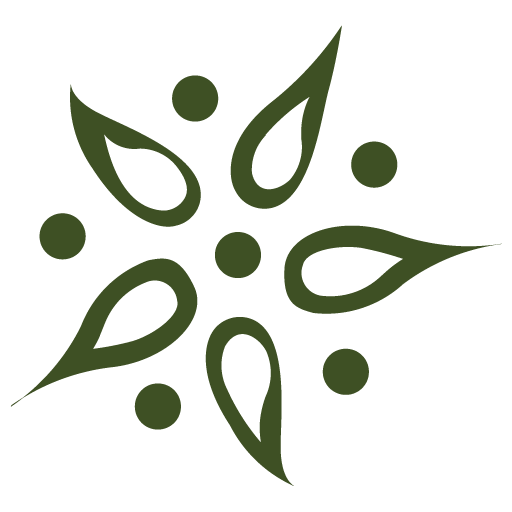Setting annual marketing goals can often feel like a game of darts in the dark. You might have a general idea of where you want to aim, but without a clear understanding of the big picture, it’s easy to miss the mark. For many small to mid-size businesses, identifying the right goals is challenging. Goals might not align with overall business objectives, or silos between departments leave marketing disconnected from the company’s bigger picture.
At Green Apple, we believe that effective marketing goal-setting requires a holistic approach: evaluating what’s worked before, collaborating with key stakeholders, and aligning your goals with broader business strategies. The following secrets will help ensure your annual marketing plan stays focused and realistic.
Pro Tips for Building Smart Marketing Goals
1. Get a Clear Understanding of the Previous Year
Reflecting on the previous year is essential. Start with a SWOT analysis (Strengths, Weaknesses, Opportunities, and Threats) to review which campaigns performed well and where there were gaps. Use data and performance metrics to understand what drove success—and more importantly—what didn’t. This will help you avoid mistakes and double down on what worked.
For example, if email marketing campaigns generated the highest ROI, you’ll want to incorporate them into your updated strategy. If social media ads fell short, dig into why. Was it the platform, targeting, or creative? Reflection is key to building smarter goals.
2. Make Sure You Understand the Big Picture
Marketing doesn’t exist in a vacuum—every part of your business affects (and is affected by) your marketing efforts. Your marketing goals need to align with key business objectives in order to be successful. Think about how marketing connects with operations, customer service, and product development. For example, if the business aims to scale operations, marketing needs to focus on lead generation or brand awareness campaigns in a way that can support sustainable growth.
It’s essential to align your marketing goals with what’s happening across departments. When marketing, operations, and customer service are in sync, it’s easier to ensure a seamless customer experience and create a brand that customers love.
3. Review Your Mission and Vision Statements
Everything you do should reflect who you are as a company. Ask your team and yourself questions like, “What do we value?” “What differentiates us from the competition?” or “Why do we exist?” It can be easy to get caught up in following trends, but don’t forget about what makes you stand out from the competition. Your annual plan should always incorporate concepts that demonstrate your differentiators.
4. Get All Stakeholders Involved in the Process
You don’t want too many cooks in the kitchen, but it’s critical to involve the right people when setting marketing goals. Collaborate with decision-makers who can offer input on key priorities. This includes leaders from other departments—like sales, operations, or customer support—who can inform your strategy.
Additionally, make sure you have buy-in from the leadership team. It’s frustrating to finalize a marketing plan only to discover the CEO’s vision wasn’t factored in. Involving stakeholders from the start ensures alignment and makes it easier to execute your plan with confidence.
5. Set Realistic, Achievable Goals
Ambitious goals are great, but it’s essential to be mindful of your resources—such as team size, budget, and time. A single marketing person wearing multiple hats won’t be able to launch a robust, multi-channel campaign without proper support.
Set specific, measurable marketing goals that stretch your team without overwhelming them. Use the SMART framework—goals should be Specific, Measurable, Achievable, Relevant, and Time-bound. A good example might be, “Increase website traffic by 15% in Q1 through targeted content marketing efforts.”
6. Think Beyond Sales—Focus on Engagement and Brand Awareness
While revenue is often the end goal, not all marketing campaigns need to focus on immediate sales. Some of the most effective strategies aim to build brand awareness or increase customer engagement. If your business is planning to enter a new market or launch a product, creating awareness might be more important than direct conversions.
Consider how marketing efforts like thought leadership, social media presence, or community involvement can contribute to long-term success. These types of campaigns build trust and loyalty, which will ultimately drive future sales.
7. Stay Flexible and Adapt Throughout the Year
No matter how well you plan, things will change. Market trends shift, new opportunities arise, and unexpected challenges can disrupt even the best-laid strategies. Build flexibility into your plan so you can pivot when needed.
One way to stay agile is by setting quarterly check-ins to evaluate your progress and make adjustments. If a campaign isn’t delivering the results you expected, don’t hesitate to tweak it or try a different approach. Flexibility ensures your goals remain aligned with both business needs and market conditions.
Five Questions to Fine-Tune Your Marketing Goals
Here are some questions to help you align your marketing goals with the big picture:
- What worked well last year and what didn’t?
- How do your marketing goals align with the company’s broader business objectives?
- Are there any operational or customer service challenges that marketing can support?
- Which stakeholders need to be involved to ensure alignment and buy-in?
- What metrics will you track to measure success throughout the year?
These questions will help you identify gaps, refine your goals, and ensure that your marketing efforts support your company’s larger goals.
Closing the Gap Between Marketing and Strategy
Setting annual marketing goals that align with your business strategy doesn’t have to feel like guesswork. With thoughtful reflection, collaboration, and a focus on realistic, actionable goals, you can build a marketing plan that supports both short-term wins and long-term growth.
Need help aligning your marketing efforts with the big picture? Contact Green Apple Strategy today to learn how our strategic planning services can help your business grow and thrive. Let’s work together to build a plan that makes next year the best one yet!











